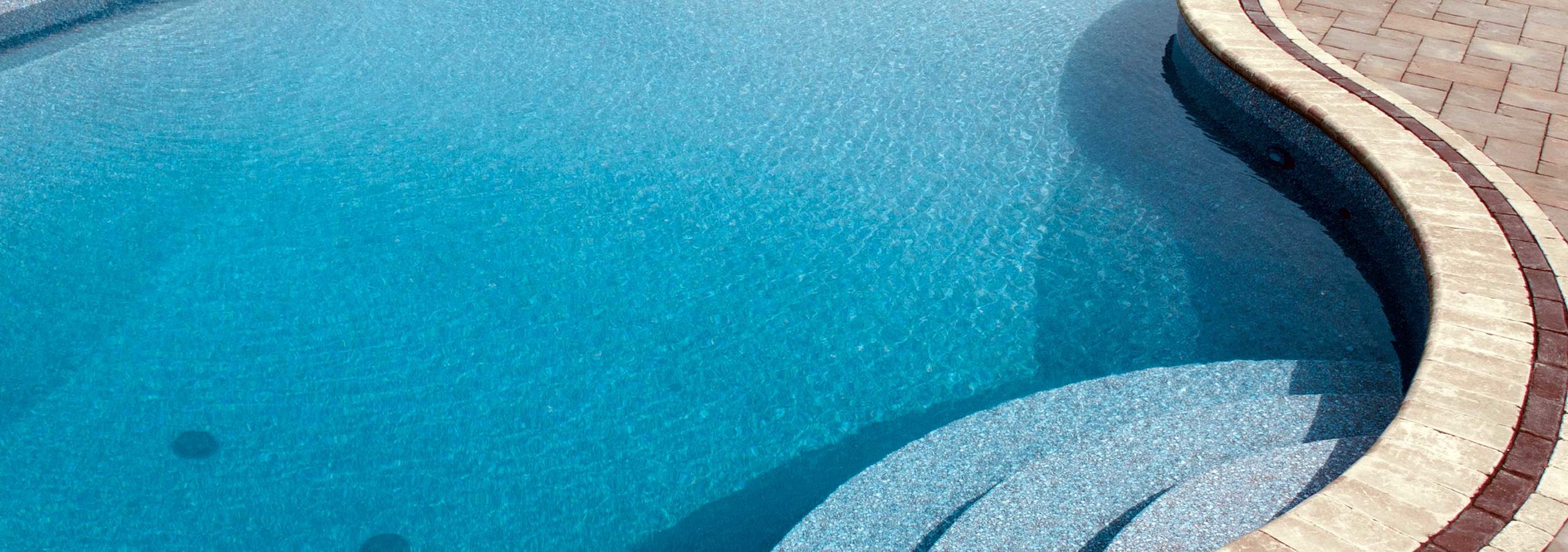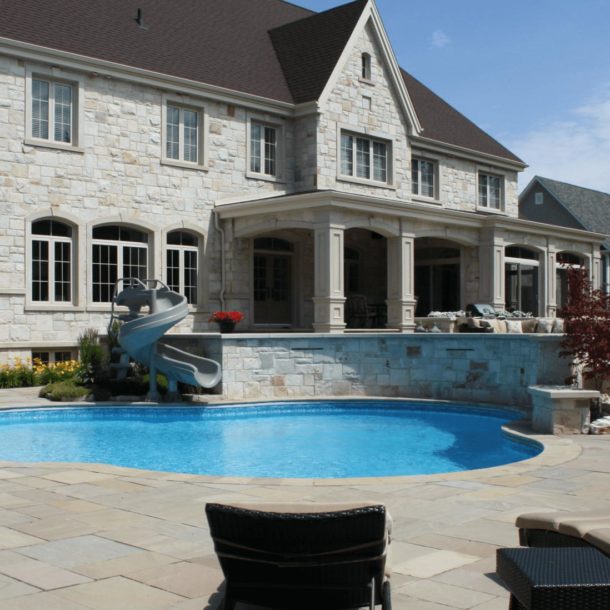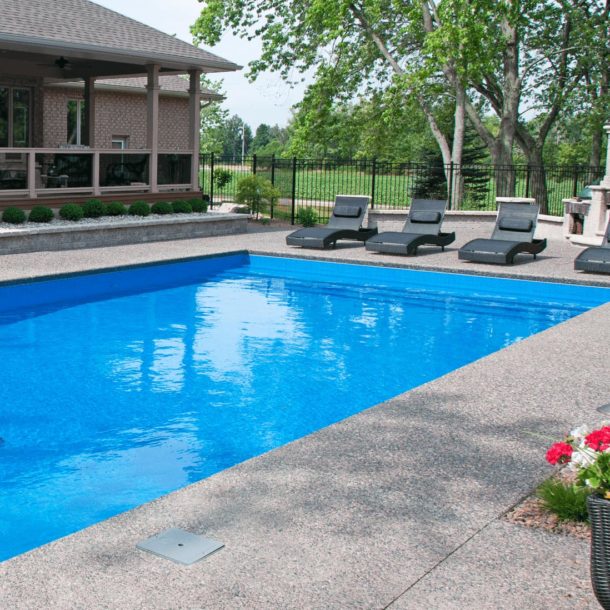If you want to enjoy a safe, sanitary, and sparkling clean swimming pool, you’ll need to take certain steps to provide proper pool care and maintenance. For example, it’s important to regularly “shock” your swimming pool, a process that involves adding chlorine or other chemicals to the water in order to destroy bacteria and other contaminants. This simple how-to guide will explain everything you need to know, like how often to shock your pool, what types of pool shock supplies you’ll need, and how to troubleshoot some common pool shocking issues.
Jump to Section: What is Pool Shock & What Does it Do? | How to Shock a Pool | How Often to Shock Your Pool | After Shocking Your Pool
What is Pool Shock & What Does it Do?
Pool owners frequently ask us, What does pool shock do, and what is it made of? “Pool shock” is an umbrella term for various chemical products that are designed to raise the levels of “free” chlorine in your swimming pool, meaning the chlorine that is available to kill algae, bacteria, and other contaminants. By increasing your swimming pool’s free chlorine, pool shock helps sanitize the water, making it safer (and far more pleasant) to swim.
Depending on the specific brand and formula, chlorine-based shock products typically contain active ingredients, like calcium hypochlorite (commonly known as “cal hypo”) or sodium dichloro-s-triazinetrione (commonly known as “di-chlor”). There are also chlorine-free alternatives like the oxidizer potassium monopersulfate, which are less powerful than chlorine-based shocks, but may be effective under the right conditions.
Chlorine-based and chlorine-free shock treatments each have unique advantages and drawbacks depending on your budget, needs, and pool setup. For optimum results, we recommend discussing your needs with a pool expert before making a decision about the best type of pool shock to purchase.
Learn More About Pool Shock
Unless you’re a chemist, shocking your pool might feel like a pointless science experiment. After all, most people have never used chemicals like di-chlor or cal hypo, so the benefits of these products might not seem obvious right away. But if you’ve ever woken up to a cloudy, discolored, or smelly swimming pool, you’ve already witnessed the reasons to shock a pool!
So what’s the science behind this process? Every day, skin cells, sweat, sunscreen, hair, leaves, insects, grime, and other organic materials contaminate your swimming pool. Not only can these substances make your pool cloudy by producing “combined chlorine,” which we’ll explain in just a moment — they also provide sustenance that helps bacteria thrive.
Along with harmful bacteria, your pool can also become contaminated by:
- Algae Blooms: Algae blooms can be green, yellow, or even black — not exactly an inviting appearance. They may occur if chlorine levels dip too low, especially in combination with warm temperatures and poor water circulation.
- Chloramines (Combined Chlorine): Chloramines develop when chlorine molecules bind with contaminants like nitrogen and ammonia. Not only are chloramines the culprit behind “pool smell,” which many swimmers find unpleasant — more significantly, they make it harder for free chlorine to do its job effectively, resulting in poor sanitization. Chloramines can also cause skin or eye irritation, which is the last thing you want to experience when you’re looking for a relaxing swim.
When used properly, pool shock combats all of these problems, working to kill bacteria, reduce chloramines, and inhibit the growth of unsightly algae. Combined with regular maintenance, that means an odor-free, irritant-free, crystal-clear pool that’s safe for you and your family to enjoy.
There are numerous pool shock brands, product types, and concentration strengths to choose from. As you might remember from earlier, most types of pool shock are chlorine-based, including products that feature cal hypo or di-chlor as their active ingredient.
Cal hypo is available at three concentration strengths (65%, 68%, or 73%) and can generally be purchased in quantities ranging from one to 50 pounds, depending on your needs. However, because it contains calcium, cal hypo may be unsuitable for pools that already have issues with calcium hardness. Cal hypo is also “unstabilized,” which means it does not contain cyanuric acid (CYA), a chemical that helps to shield free chlorine from ultraviolet (UV) rays emitted by the sun.
Because they lack protective CYA, unstabilized shock treatments like cal hypo are more vulnerable to sunlight, making them best suited for indoor pools or evening use. The benefit of unstabilized shock treatments is that they are fast-acting and economic, they cost just a few dollars per pound. Di-chlor, an alternative to cal hypo, is a “stabilized” or CYA-containing product available at a concentration of 56%. Oxidizers like potassium monopersulfate, which do not contain any chlorine, can also be used to shock your pool but are less effective for tough or extreme jobs.
While pool shock usually contains chlorine, shock and chlorine are not the same thing and cannot be used interchangeably. By increasing free chlorine levels, shock treatments help quickly sanitize your pool, rapidly destroying bacteria, algae, chloramines, and other contaminants.
Other chlorine products, such as 3” chlorine tablets, contain lower concentrations of chlorine. Because they are weaker and less concentrated, chlorine tablets need to be used more frequently than pool shock. They also serve a different purpose, maintaining steady chlorine levels rather than destroying contaminants. However, both should be used for optimal results.
How to Shock a Pool
Now that we’ve covered some of the basics, it’s time to shock your swimming pool. Just follow our simple instructions below, which explain how to shock a swimming pool in 10 easy steps.
If you get stuck at any point in the process, don’t worry — just contact one of the friendly pool experts at Latham, and we’ll talk you through the process.
How to Shock a Swimming Pool Checklist
Download our free maintenance resource to get expert tips and step-by-step instructions for shocking your swimming pool.
How Often to Shock Your Pool
Generally speaking, you should shock your pool every one to two weeks. In addition, you may also wish to shock your pool after pool parties and outdoor gatherings, or following periods of severe weather. You should also shock your swimming pool if the CC level reaches or exceeds 0.5 ppm, or if you notice cloudiness, discoloration, or strong odors.
Make sure to exercise special care when you open your pool for the season, or when you use your pool for the first time. In these situations, you may need to adjust the pool’s alkalinity, calcium hardness, pH, and/or CYA levels, which will affect the shocking process. It’s important to balance the water before shocking the pool.
We recommend asking an experienced pool technician for help testing, balancing, and shocking the water if you are opening a new or seasonal swimming pool.
Learn More About Shocking Your Pool
If you’re wondering, “When do you shock a pool?” the simple answer is to wait until evening. Shocking your pool at night gives chlorine and other chemicals time to work before they can be damaged or weakened by exposure to sunlight. This is especially important if you are using an unstabilized shock treatment, such as cal hypo, which does not contain UV-blocking CYA.
Trying to figure out how much shock to use for your swimming pool? Use the chart below as a handy pool shock calculator.
General Rule: 2 pounds of shock per 10,000 gallons of water

Fortunately, it’s all but impossible to “over shock” your pool. However, you can accidentally use more shock than you need to, wasting money and supplies while creating extra work for yourself.
To prevent this, avoid using more shock than your pool requires. Instead, check our pool shock calculator above and make sure to follow all product directions carefully.
Remember, there are certain situations where a higher-than-normal dose might be necessary. If you’re dealing with extreme contamination, consult a pool expert before you shock your pool.
Yes, you can shock a saltwater swimming pool. In fact, not only is it possible to shock a saltwater pool — it’s a smart idea if you want to get the most out of your investment. For example, you will need to shock your saltwater pool if it becomes contaminated by algae. That being said, your saltwater pool’s adjustable chlorine generator should generally produce enough chlorine to control contaminants.
After Shocking Your Pool
What should you do if your pool still looks cloudy or discolored after being shocked, and how long after shocking is it safe to swim again? We answer these questions and more below — but first, a quick word of warning. If you activate your swimming pool’s automatic safety cover too soon after shocking, it could be stained or damaged by the pool shock chemicals. To learn more about this issue (and the steps you can take to avoid it), check out our article on how to keep pool chemicals from damaging your safety cover
Learn More About After Shocking Your Pool
After being shocked, your pool will temporarily have high levels of free chlorine (FC). Swimming in highly chlorinated water can cause skin irritation and other harmful effects. The CDC recommends that pool owners “maintain free chlorine levels…between 1-3 parts per million” for safe swimming.
Depending on the treatment you used, it may take anywhere from an hour to 24 hours for your swimming pool’s FC levels to return to a safe range.
We recommend running your pool pump for at least six hours after shocking. This allows the pool shock chemicals to disperse evenly throughout the water, while also giving the filters a chance to clear away dead algae and other contaminants.
Is your pool cloudy after a shock treatment? If the answer is yes, the culprit may be algae, chloramines, or issues with unbalanced water, such as high pH levels or calcium hardness levels. If you shocked the pool using cal hypo, it’s also possible that the cloudiness is chemical residue.
You can fix the issue by simply running your pool filter and allowing the residue to gradually dissipate. If the water is cloudy for other reasons, such as a damaged filtration system, you should contact an expert for assistance.
If your pool looks green after being shocked, the problem may be unbalanced pH levels or faulty filtration systems. If neither of these are causing the issue, the culprit may be high levels of the stabilizer CYA, which can interfere with free chlorine’s ability to kill algae — a common cause of green water.
To lower the CYA levels in your swimming pool, you can dilute the water, or completely drain and refill the pool. Ideally, you should aim for a CYA level, or stabilizer level, of 35 to 60 ppm (for conventional swimming pools), or 60 to 80 ppm (for saltwater pools). For more tips on dealing with algae and green water, see our guide to swimming pool algae removal.
Get the Care Your Pool Needs from a Trusted Latham Independent Builder
In order to enjoy your pool for years to come, proper and attentive maintenance is important. If you have questions about maintaining your pool, contact your local Latham Independent Builder.
While these resources can help guide you, enlisting the help of a pool professional can ensure that one of your largest backyard investments gets the care and protection it deserves.
Learn More About Pool Care & Maintenance
Stay on top of maintaining your pool! Whether you have a vinyl liner pool or fiberglass swimming pool, dive into these resources to get tips to properly care for it:

Methods for Testing Water Chemistry
Balancing your pool’s water chemistry is essential to keeping water clear, preventing damage and getting the most enjoyment out of your pool. Get tips for creating the right chemical environment for your pool.

How to Winterize an Inground Pool
If you live in an area that experiences periods of freezing and thaw, there are necessary steps you should take to winterize your pool. Learn how to close your pool and protect your investment during winter months.

View All Maintenance Topics
If you’re new to pool maintenance, don’t worry! We’ve got you covered with resources that outline best practices for the basics of caring for your pool.

How to Open an Inground Pool in the Spring
Springtime heralds the dawn of greenery, sunshine and the promise of warmer temperatures. It’s also the perfect time to open your pool for the season! From the chemicals needed for pool startup to the best time to prep your pool for the season, learn everything you need to know about the pool-opening process.
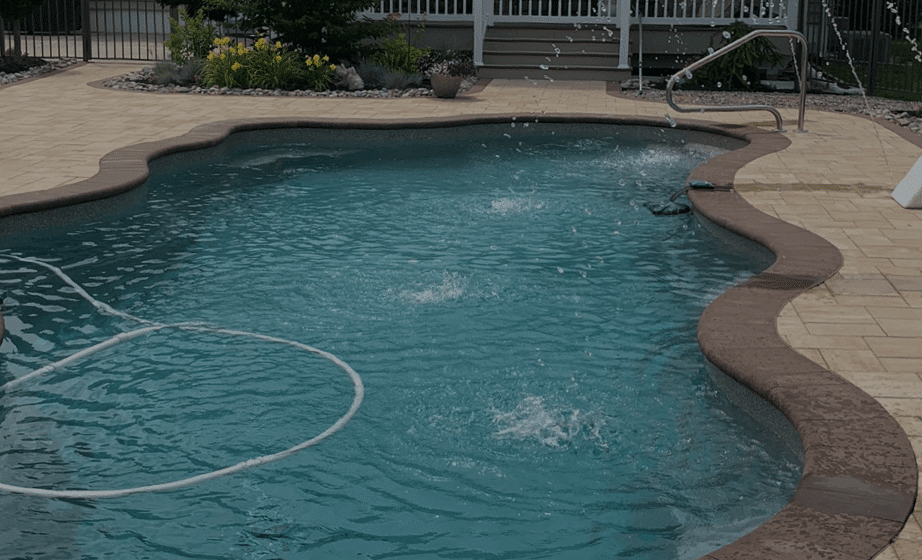
How to Clean an Inground Pool
From stain removal to using a pool vacuum, check out best practices for cleaning your inground pool and keeping it crystal clear!
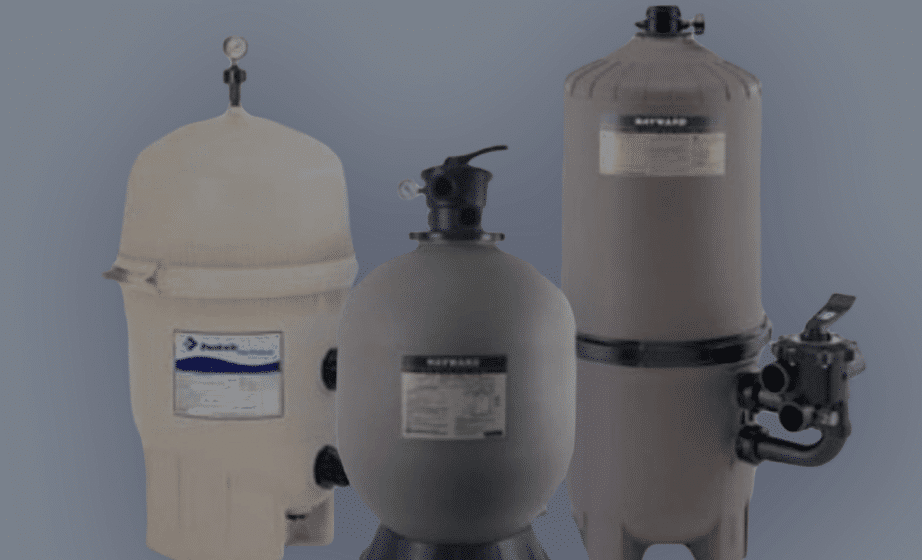
How to Clean Pool Filters
Your pool filters work hard so you don’t have to! However, while your pool filters work to trap dirt and debris, they still need a little TLC. Get tips to clean your pool filters.

